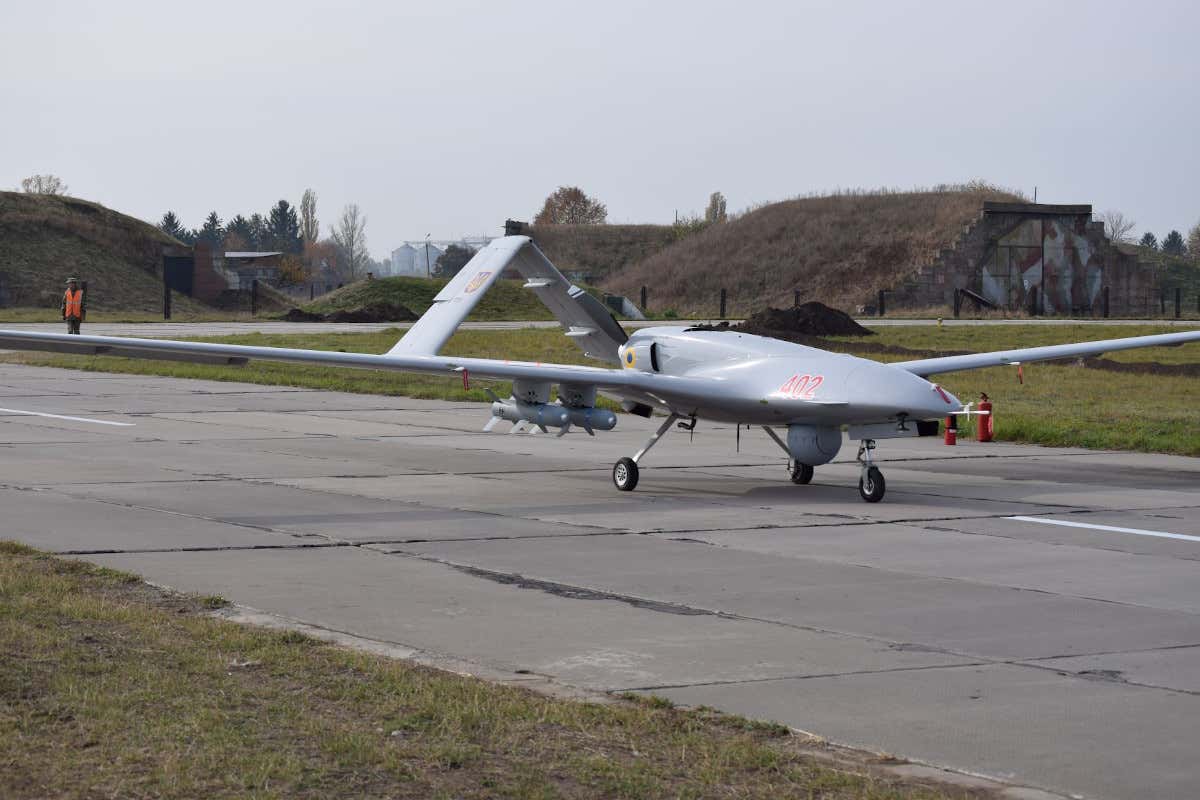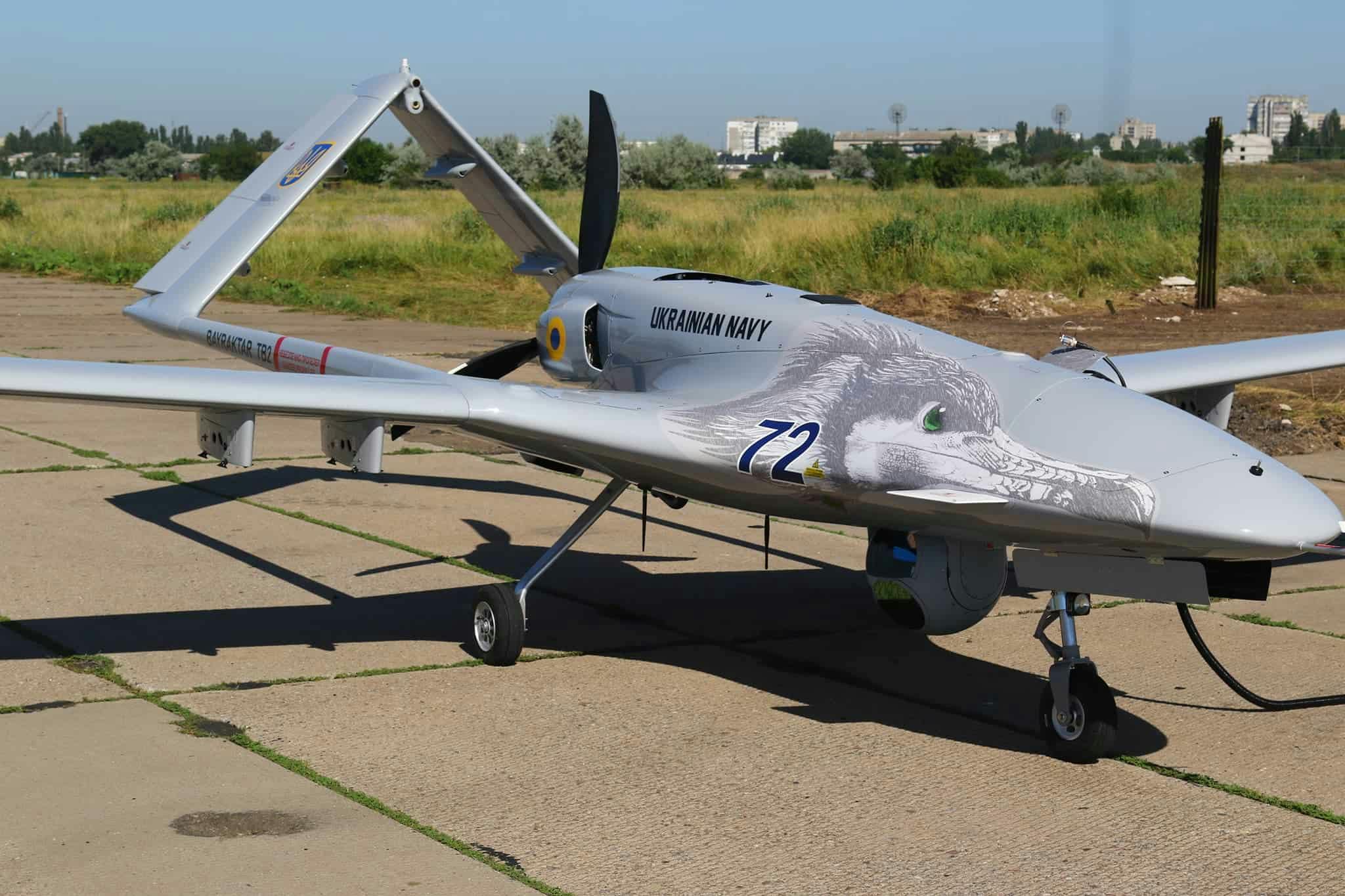Ashish Dangwal
The Turkish drones’ success was extensively covered in the media in the initial stages of the war. The success of these drones was documented in countless videos heavily shared on social media, depicting Ukrainian drones decimating Russian advances.
However, the sudden disappearance of these drones from both the battlefield and from the media has baffled many analysts who are trying to figure out the rationale behind the action.
Russian reports claim that since the start of the conflict, Russian military forces have knocked down at least 130 Ukrainian drones. However, the Russian figure differs dramatically from the number of drones sent by Turkey. Ukraine has received 50 drones, according to Turkey.  File Image: A Ukrainian TB2 drone armed with precision-guided weapons.
File Image: A Ukrainian TB2 drone armed with precision-guided weapons.
 File Image: A Ukrainian TB2 drone armed with precision-guided weapons.
File Image: A Ukrainian TB2 drone armed with precision-guided weapons.Russian media outlets have also highlighted the lack of latest information regarding Bayraktar TB2’s combat operations in Ukraine since mid-August. Turkish drones are not operating as effectively as they were in Libya, Syria, and particularly during the Nagorno-Karabakh war.
The strikes on Snake Island, which started in the first weeks of May and went on until the end of June, were one of the Turkish drones’ last notable confrontations. Numerous experts opined that Russia had taken note of its mistakes and boosted the efficiency of its layered air defense system.
Meanwhile, it has been reported that the US intends to sell Ukraine General Atomics MQ-1C Gray Eagle armed drones, which are more capable than TB2s.
However, the US is equally concerned that Russia may be able to knock out Gray Eagle armed drones, which would result in the loss of cutting-edge US technology. The US also fears that the drones could end up in the hands of Russian military-tech experts.
Factors Behind The Absence Of Turkish Drones
The fact that Russia has strengthened its defense systems and is shooting down and jamming many of Ukraine’s drones is one of the reasons Turkish drones could be losing effectiveness.
Samuel Bendett, an analyst and expert in unmanned and robotic military systems, noted that Russian electronic warfare and air defenses have improved in coordination and deployment compared to the early stages of the conflict.
He added that Russian forces are using early warning radars to locate drones, and electronic warfare weapons are being used to jam and interfere with their transmission.
The Chief of the Air Staff (CAS) of the Indian Air Force (IAF) recently noted that “Inputs about the effectiveness of the Remotely Piloted Aircraft (RPAs) have been mixed. While initial reports were largely positive, as the major action shifted to the East, where a structured Russian AD system was available, most inputs indicate high vulnerability and limited impact.
“This highlighted the need for a multi-layered and ranged air defense system with both hard and soft kill options for dealing with RPAs. However, definitive conclusions can only be reached once the entire context and conditions become clear,” he added.
 Bayraktar TB2 drone
Bayraktar TB2 droneBesides that, Moscow also employs a variety of weapons, including machine guns and air defense systems, like the Tor missile system, to shoot drones.
In this new chapter of the conflict, Ukraine’s drones are getting less effective, but Russia is efficiently using Iranian-made drones. Latest reports have also suggested that Russia has not used Iranian-origin drones for quite some time and could be running out of ‘cheap and chirring’ UAVs.
Russian media also speculated that the gas agreement between Russia and Turkey might be another factor in the less usage of Turkish drones in combat.
It was previously stated that Russian President Vladimir Putin had placed conditions on Turkish President Recep Tayyip Erdogan to stop delivering Turkish drones to Ukraine to keep the gas deal alive. As a result, Turkey is reportedly not making any new TB2 drone deliveries to Ukraine.
The EurAsian Times had also reported that Baykar backed out from establishing a drone factory in Ukraine in collaboration with a state-run defense company.
Russian media claim that political machinations between Russia and Turkey, rather than Russian air defense systems, are to blame for the absence of Turkish drones.
No comments:
Post a Comment